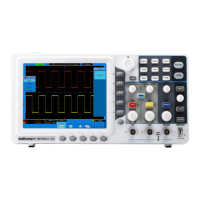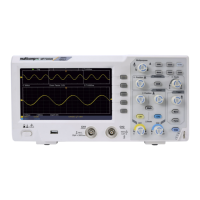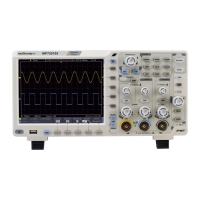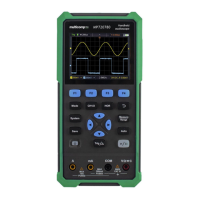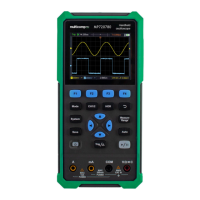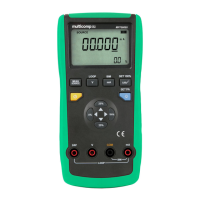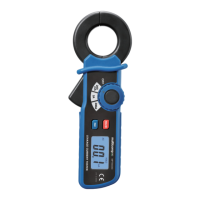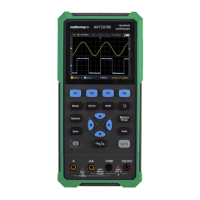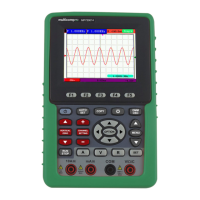User Manual
Notes for using FFT
Use the default dB scale for details of multiple frequencies, even if they have very
different amplitudes. Use the Vrms scale to compare frequencies.
DC component or offset can cause incorrect magnitude values of FFT waveform. To
minimize the DC component, choose AC Coupling on the source signal.
To reduce random noise and aliased components in repetitive or single-shot events, set
the oscilloscope acquisition mode to average.
What is Nyquist frequency?
The Nyquist frequency is the highest frequency that any real-time digitizing oscilloscope
can acquire without aliasing. This frequency is half of the sample rate. Frequencies above
the Nyquist frequency will be under sampled, which causes aliasing. So pay more
attention to the relation between the frequency being sampled and measured.
Use Vertical Position and Scale Rotary controls
The 4 channels use the same Vertical Position and Vertical Scale rotary controls. If you
want to set the vertical scale and vertical position of a channel, press CH1, CH2, CH3 or
CH4 at first to select the desired channel. Then turn the Vertical Position and Vertical
Scale rotary controls to set the values.
1. The Vertical Position rotary control is used to adjust the vertical positions of the
selected waveforms.
The analytic resolution of this control rotary control changes with the vertical division.
When the Vertical Position rotary control is rotated, the pointer of the earth datum
point of the selected channel is directed to move up and down following the
waveform, and the position message at the center of the screen would change
accordingly (see Figure 4-7).
2. The Vertical Scale rotary control is used to regulate the vertical resolution of the
selected wave forms.
The sensitivity of the vertical division steps as 1-2-5. The vertical scale is displayed at
the left bottom corner of the screen (see Figure 4-7).
